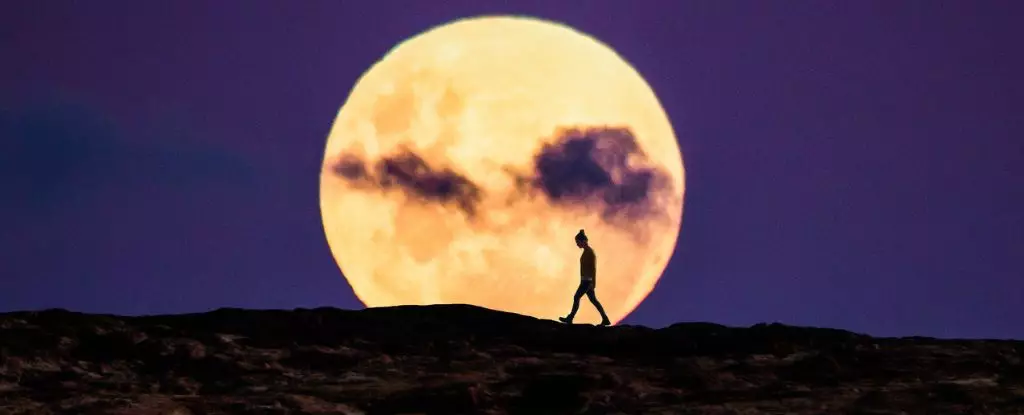As the celestial ballet continues overhead, this week’s arrival of the largest and brightest supermoon promises to be a breathtaking event for skywatchers around the globe. NASA has confirmed that this extraordinary phenomenon will be visible from Tuesday evening through Friday morning, providing ample opportunity for enthusiasts and casual observers alike to marvel at the luminosity of the moon. However, the period from Wednesday evening to Thursday morning represents the peak moment of this spectacle, as the moon approaches its closest point to Earth and shines with exceptional brilliance.
The term “supermoon” is exclusive to occasions when a full moon, or even a new moon, coincides closely with its perigee—the point in the moon’s elliptical orbit where it is nearest to Earth. This week marks such a coincidence, with the moon reaching perigee at approximately 8:50 p.m. ET on Wednesday, sitting a mere 221,938 miles away from our planet. That’s about 17,000 miles closer than the average distance, resulting in a radiant display that is reported to be about 14% brighter than a typical full moon, according to Space.com.
With its official full moon phase occurring on Thursday at 7:26 a.m. ET, the most opportune moments to witness this supermoon are during the moonrise on Wednesday or Thursday. Astronomers suggest that observing the moon when it is near the horizon can result in a captivating optical illusion: thanks to the presence of trees, buildings, and other grounded objects, the moon appears significantly larger than when it is high in the sky. This natural phenomenon adds to the allure of the supermoon, making it an easily accessible spectacle for even those living in urban environments.
Though the supermoon is spectacular enough to be appreciated with the naked eye, using a telescope can enhance the experience, revealing intricate details on the lunar surface. Wes Ryle, an astronomer from the Cincinnati Observatory, emphasizes the value of experiencing the supermoon through magnification. Not only does it allow observers to see more detail, but it also provides an enriching opportunity for shared experiences in appreciation of the cosmos. For those who are less familiar with astronomy, apps and websites can assist in determining the exact time when the moon will rise in their specific location, helping to orchestrate moments of awe and wonder.
Described as the third of four consecutive supermoons in 2023, this week’s celestial display is particularly remarkable due to the way the perigee aligns with the full moon. Ryle notes that this supermoon is technically the largest of the series, eclipsing even the one witnessed in September. Such observations create heightened anticipation for skywatchers, emphasizing the joy of uncovering the dynamics of celestial events.
Notably, this supermoon has also been designated as the Hunter’s Moon, a title rooted in tradition and history. It reflects a time of year when many animals begin to prepare for the impending winter months. As food sources dwindle, the Hunter’s Moon symbolizes the changing seasons, recalling times when humans would hunt to stockpile provisions. This cultural significance enriches the experience of viewing the moon and connects current observers to ancient survival practices.
While this week’s supermoon captures attention, such celestial events are relatively frequent. For avid astronomy enthusiasts, missing one supermoon does not mean waiting too long for the next opportunity. Ryle explains that nature often aligns several supermoons in succession, and the upcoming months promise more chances to gaze upon the moon’s stunning beauty. Notably, 2025 will witness another series of supermoons during the fall months, providing a future allure to those captivated by lunar phenomena.
As this week’s supermoon graces the sky, it is a reminder of the wonders of our universe. With its unparalleled brightness, cultural significance, and accessibility to all observers, the supermoon remains a mesmerizing aspect of our natural world. Whether experienced in solitude or with loved ones, the chance to behold this celestial body fosters connections between people and the cosmos. So, let your gaze turn upwards, and relish the brilliance of this phenomenon while you still can.


Leave a Reply